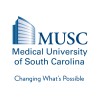
Recolonization Following Preoperative Disinfection Plastic Adhesive Drapes
Surgical Wound InfectionThe purpose of this study is to measure the time to recolonization intraoperatively after preoperative disinfection with chlorhexidine solution in ethanol and to determine evidence of differential bacterial growth with or without plastic adhesive drape on the chest as well as with or without microbial sealant on the leg.

A Randomized Trial of Ostomy Closure Techniques
Wound InfectionStoma closure has been associated with a high rate of surgical site infection (SSI). The rate for SSI following stoma closure has been noted to be 7-41%; a rate that is higher than expected for a clean-contaminated operative classification. The ideal stoma site closure technique is still debated in the current literature. The aim of this study was to compare the rate of SSI following two different stoma closure techniques, primary closure versus a skin approximating purse string closure, in a multi-center randomized controlled trial. The investigators hypothesize that purse string closure technique will have a lower rate of SSI than primary closure technique.

Timing of Prophylactic Antibiotics for Cesarean Sections
EndometritisWound InfectionThis is a randomized, double-blinded placebo controlled trial of cefazolin timing before cesarean section fo infection prophylaxis. Subjects are randomized to cefazolin either 30 minutes prior to skin incision or at time of cord-clamping. Primary outcome is infectious morbidity including wound infections and endometritis.

Patient Education at Dismissal After Surgical Procedure
Wound Infection Post-TraumaticWound Infection3 moreCan improvements in patient dismissal education materials reduce incidence of wound non-healing and infection.

LAW Trial -The Impact of Local Anesthetics Infiltration in Surgical Wound of Gastrointestinal Procedures...
Surgical Site InfectionWound Infection2 moreThe purpose of this study is to determine if the infiltration of 0.5% Bupivacaine in the surgical wound is effective to diminish the pain and the risk of surgical site infections in patients who go to a open gastrointestinal procedure.

Negative Pressure Wound Therapy - A Multi-Centered Randomized Control Trial
to See Whether Negative Pressure Wound Therapy Decreases Wound Infections.Children with neuromuscular disorders such as cerebral palsy, children with kyphosis and post-traumatic scoliosis have higher infection rates after scoliosis surgery than healthy children who undergo scoliosis surgery. The purpose of our study is to compare the effect of NPWT on infection rates when compared to standard gauze dressing. Participants will be randomized to the "NPWT" or "standard dressing" group. We will compare infection rates between the two groups. We hypothesize participants in the "NPWT" group will have a lower infection rate.

Addition of Pre-wound Closure Povidone Iodine Wash Versus Direct Wound Closure Effect on Surgical...
Surgical Site InfectionSurgical Wound InfectionA Randomized controlled trail to To assess the efficacy of povidone-iodine wash before wound closure in preventing surgical site infections.

Skin Perfusion After Abdominal Surgery
Surgical Wound InfectionThe purpose of this study is to evaluate the consequences of 3 selected surgical procedures on abdominal wall perfusion in order to help to reduce postoperative complication related to inadequate tissue perfusion. The selected surgical procedures are a) abdominoplasty, b) breast reconstruction with a free flap from the lower abdomen and c) endovascular stenting of an abdominal aorta aneurism. These operations are all standard surgical procedures frequently performed at the University Hospital of North Norway, Tromsø. The abdominal wall perfusion will be evaluated with the use of Dynamic Infrared Thermography (DIRT).

Swabbing of Subcutaneous Tissues of Cesarean Section Wounds With Povidone Iodine
Wound InfectionThe study has 2 groups. Group A in which the subcutaneous tissue will be swabbed with 10 cc of undiluted 10% povidone iodine and will not be mobbed. Group B ; No swabbing. Women in both groups will be followed up during hospital stay and outpatient clinic visits a week and a month after cesarean delivery for surgical site complications which will be evaluated by the researcher.

Prophylactic Post-Cesarean Incisional Negative-pressure Wound Therapy in Morbidly Obese Patients...
Negative-pressure Wound TherapyMorbid Obesity2 moreTo evaluate the effectiveness of negative-pressure wound therapy in decreasing wound complications in morbidly obese patients (BMI greater than of equal to 40) at Albany Medical Center Hospital. Retrospective data will be collected regarding morbidly obese patients who have undergone cesarean section and patients will be recruited to have the intervention (negative-pressure wound therapy) applied and outcomes will be evaluated.
